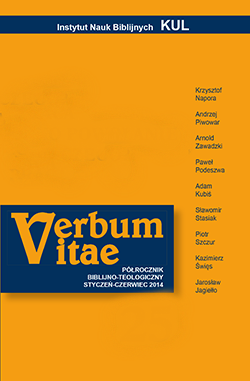„Świadectwo” (‘ēdût) w kapłańskiej koncepcji sanktuarium i przymierza
"Testimony” (‘ēdût) in the Priestly Concept of Sanctuary and Covenant
Author(s): Janusz LemańskiSubject(s): Theology and Religion
Published by: Katolicki Uniwersytet Lubelski Jana Pawła II - Wydział Teologii
Keywords: Testimony; covenant; Ark; priestly theology
Summary/Abstract: The theological meaning of the word ‘ēdût, which is used in the priestly narrative about the construction of the Tent of Meeting, has long been a topic of debate. A synchronic analysis allows us to see in it “two stone tablets”, a kind of artifact which Moses puts into the Ark and which is not to be seen again. It symbolizes and brings to mind all the words of God passed on by Moses at Sinai. On other hand, diachronic analysis allows us to think that the idea of the Ark did not belong to the priestly strata of PG but rather was added later (PS). It has also been suggested that in P originally the Ark was called the Ark of Meeting and then the Ark of Testimony (the connection between j‘d and ‘dwt → ‘d). In its original form, the narrative about the Ark might have suggested the traditional role of the object: it symbolized the presence of God and was understood as the footstool of His invisible throne, where the treaty was kept. Later, the concept of the place of meeting with God was transferred to the Ark-cover (kappōret), and ‘ēdût (Testimony) became the symbol of the covenant stipulations. In the final phase it came to mean the two stone tablets with the Decalogue.
Journal: Verbum Vitae
- Issue Year: 2015
- Issue No: 27
- Page Range: 47-76
- Page Count: 30
- Language: Polish

